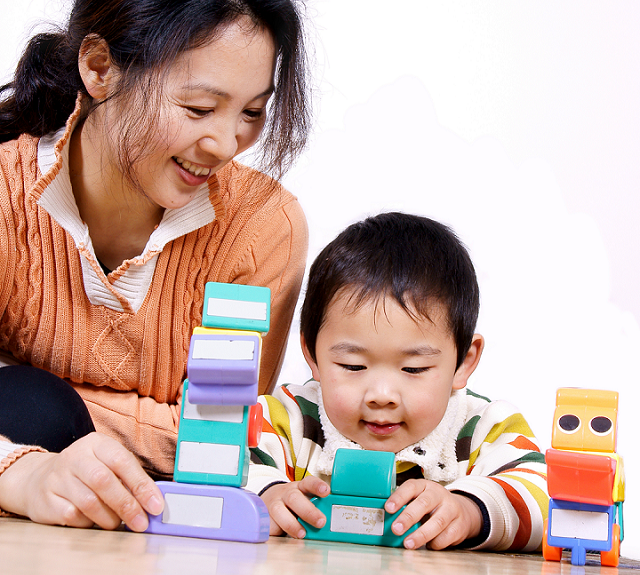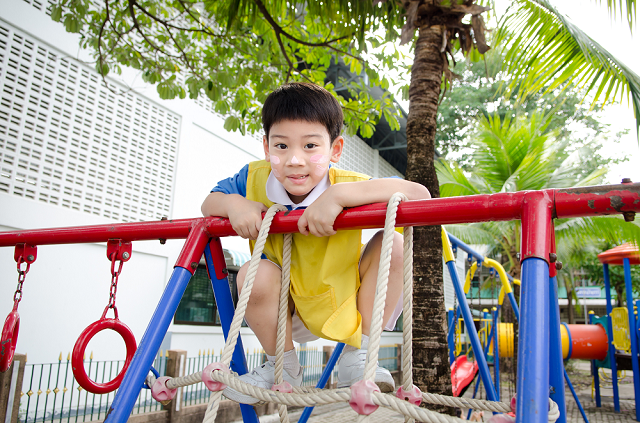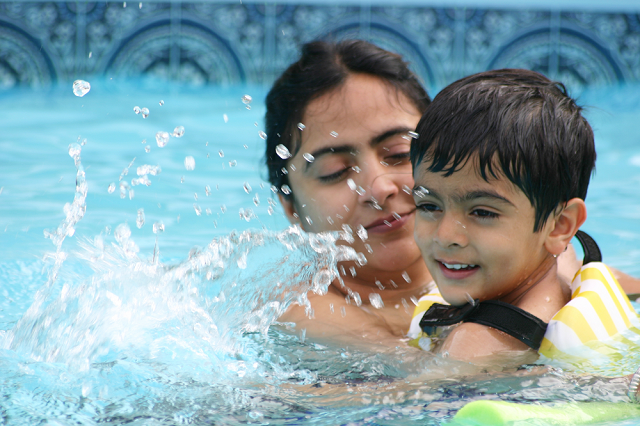Keep your child safe from injury and pain with these simple preventive measures.
Safety Tips at the Playground, Home and Pool
Children are naturally curious and love to explore. Even the most dedicated parent cannot keep an eye on her child all the time, so bruises and bumps are part and parcel of childhood. While it is impossible to completely child-proof your home and environment, there are ways to maintain safe and child-friendly surroundings for your child. We have broken it down for you by stages.


Explain to Your Child…

Preschoolers
These 3 to 6 year-olds are very energetic, you might probably wonder if something is wrong when you do not hear a sound from them. They can run and jump, but are still developing self-control and judgement. Hence, accidents can easily happen.
Do not underestimate your child’s desire to try everything.
Things to do:
- Keep window grilles and balcony doors closed and locked with latches.
- Store flammable items (matches, lighters, cigarettes) and sharp objects (scissors, knives, pen knives) out of sight.
- Cover electrical outlets with safety caps.
- Teach your child to remain seated when there is food in his mouth.
- Keep your child out of the kitchen. Turn pan handles inwards and cook using the inside burners, keeping hot pots and their contents out of reach.
- Restrain your child from jumping on sofas or beds.
- Teach your child to pack up his toys after a play session.
General Play
Children at this stage love to play with their friends, but they need to learn how to do so safely.
Things to do:
- Keep potentially harmful items such as plastic bags, cleaning detergents, pills and sharp objects out of reach.
- Teach your child about the dangers of fire, and keep flammable items away from him.
- Be aware of your child’s location and what he is doing.
At the Playground
With these simple guidelines, playgrounds can be excellent places for your child to develop physical and social skills.
To reduce risk of injury:
- Check that the playground equipment is suitable for the age of your child. Teach your child to be careful and supervise him to prevent serious injuries.
- If you dress your child in clothes with drawstrings or cords, please ensure that the strings are properly and securely tightened, so that they will not get caught and pose a danger to your child.
- Look out for damaged equipment that may pose a danger to children playing at the playground.
- Teach your child to use handrails and stay within barriers for his own safety.
- Teach your child to take turns and not push while using swings or slides at the playground.
Explain to Your Child…
- No walking across a moving swing or see-saw.
- Slide down feet first, in an upright position. Ask him to wait until the child before him gets off the bottom of the slide before sliding down.
- Wait for his turn. No pushing or shoving.
- Hold on with two hands when swinging or climbing.
- Do not play on wet equipment as it may be slippery.
In the Water
Even children who know how to swim can have a water-related accident.
Always keep an eye on your child when in or near swimming pools as well as other bodies of water, such as the sea, canals, rivers and reservoirs.
To reduce risk of injury:
- Always supervise your child closely when he is in or near water. If you need to leave the area, have another adult be the “designated watcher”, or take your child with you.
- Do not let your child go into the water during bad weather. If the sky is dark or lightning-streaked, and the lifeguard signals you to get out of the water, do so.
- Learn CPR (Cardio-Pulmonary Resuscitation) and how to use AED (Automated external defibrillators), and encourage your spouse to do so as well.
- Do not depend on swim floats or water wings. These are not life-saving devices.
- Teach your child not to run or play near the pool.
- Remind your child to walk carefully around pool areas.
- Know where the lifeguards and safety aids are.
- Enrol your child in swimming classes, but do not assume that he is safe just because he has learnt how to swim.
- Follow safety rules and signs.
- Teach your child water safety and water survival skills before letting him participate in open water (the sea and other non-pool) activities.
- Ensure that your child has the right safety equipment (e.g. life jackets) on all the time.
For more information, visit the National Water Safety Council’s website.
Visit Parent Hub, for more useful tips and guides to give your child a healthy start.
Download the HealthHub app on Google Play or Apple Store to access more health and wellness advice at your fingertips.
Read these next:

Ask
HealthHub AI
HealthHub AI
Beta

























